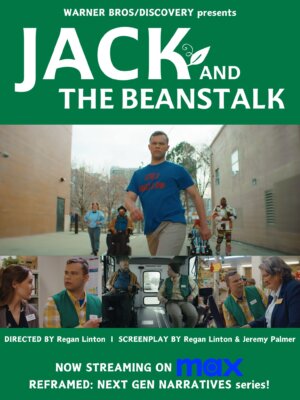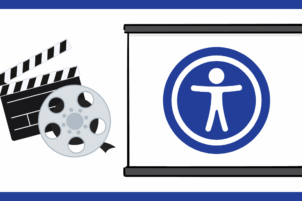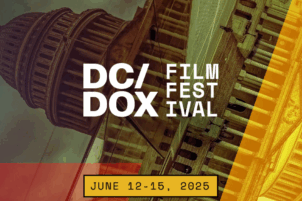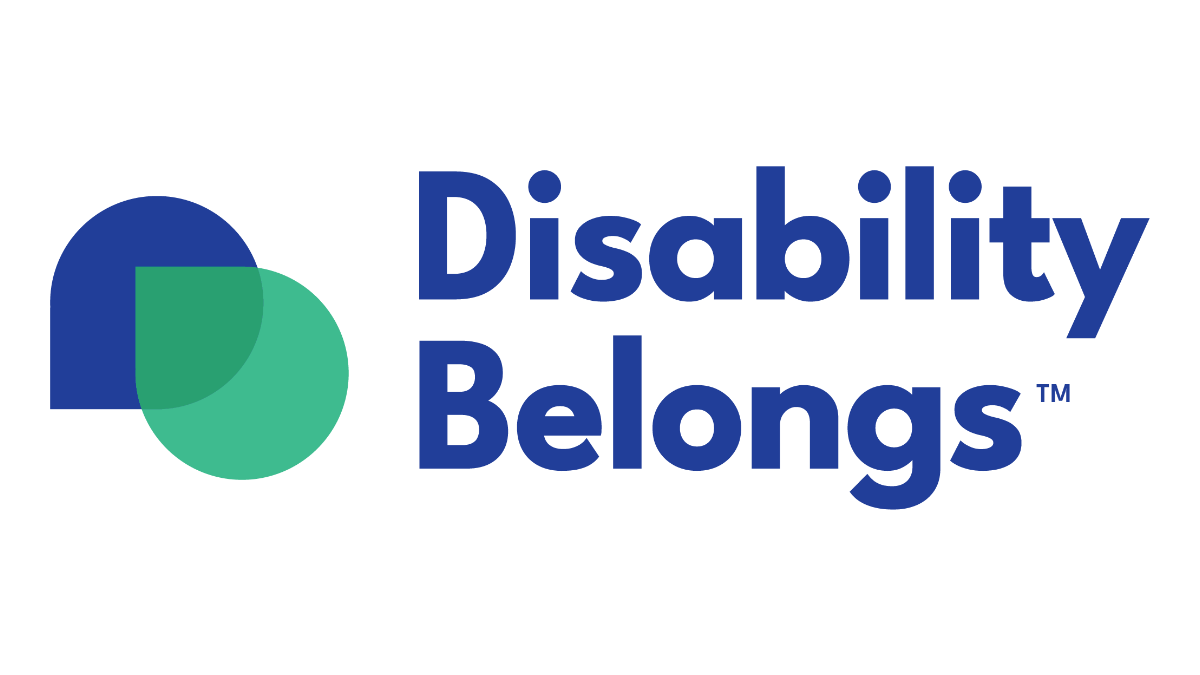 Viewers may think they know the story of Jack and the Beanstalk. However, writer/director Regan Linton has reimagined this classic tale in a new short film as part of Warner Bros. Discovery’s Reframed: Next Gen Narratives program. In this series, six filmmakers adapted classic movies through a contemporary lens, tackling modern-day issues surrounding identity.
Viewers may think they know the story of Jack and the Beanstalk. However, writer/director Regan Linton has reimagined this classic tale in a new short film as part of Warner Bros. Discovery’s Reframed: Next Gen Narratives program. In this series, six filmmakers adapted classic movies through a contemporary lens, tackling modern-day issues surrounding identity.
Episode Three: Jack and the Beanstalk is about a young man named Jack (Josh Elledge), who is an employee at the Beanstalk Grocery. Jack is a subminimum wage worker being exploited by his employers. Despite being an excellent worker, beloved by his colleagues and customers and recommended for a promotion by his manager, Ellie (Valentina Fittipaldi), Jack is caught off guard when the regional manager, Marge (Hannah Duggan), tries to shut his progression down. Marge cunningly cites the company’s compliance with employment laws while evading the obvious exploitation of Jack.
“That really resonated for me in relation to our disability community, and the constant battles we are fighting to be able to live fully and productively,” director Regan Linton shared in an interview with Disability Belongs™. “So, I wanted our Jack to be someone who has a lot going on underneath the surface (which most of us do), and follows the rules (however absurd they may be) in order to influence and win. And when I thought about current metaphorical ‘giants’ our community faces, there are so many, but the inherently inequitable subminimum wage issue jumped out to me.”
For thousands of Americans with disabilities, the outdated practice of subminimum wages under Section 14(c) of the Fair Labor Standards Act remains a barrier to economic independence. Linton’s Jack and the Beanstalk not only shows the harsh reality of working for subminimum wage, but also how a worker’s disability is often weaponized as a reason to deny professional growth to qualified employees wishing to take on more responsibility and move up the ladder.
“Last year, as the film was in post-production, there was some exciting movement in Congress, the Department of Labor, and individual states that were moving towards getting rid of section 14(c) of the Fair Labor Standards Act, which is what authorizes subminimum wages,” said Linton. “There is a proposed bill, H.R.1263 – Transformation to Competitive Integrated Employment Act, that feels like an optimal step to a new framework.”
People working for subminimum wages are frequently denied promotions, raises, and opportunities for growth within the workplace. It’s a corporate policy that enables the exploitation of workers, keeping them in jobs that pay below the minimum wage indefinitely. Millions of Americans with disabilities already face an endless number of corporate obstacles in their search to find gainful employment in our society.
“2025 has been characterized by so many other contentious government issues, I fear this issue has largely been swept aside,” Linton said. “There are numerous states that, even with the law in place, have established programs to supplement the wages of workers to raise the pay of workers. And like anything, there are complexities. As [with] so many things, it takes advocacy to our lawmakers, and conversations in our communities. I know many people with and without disabilities who don’t even know that subminimum wages exist. So, raising awareness is a first step. And, understanding that there are other current dialogues about subminimum wage that are slightly different…having to do not with disability subminimum wage, but subminimum wage for workers who receive tips.”
Linton’s Jack and the Beanstalk showcases the advocacy of the disability community in fighting for equal employment rights when Jack teams up with his friend, Chuck (Stewart Tucker Lundy), to get the backup he needs to fight this injustice and not be exploited.
“For individuals who are seeking employment, understanding that there are alternatives to a subminimum wage is crucial,” Linton said.
For more information about subminimum wages and how you can advocate to end this outdated practice, visit Disability Belong™’s Action Center.
Disability Belongs™ spoke with Regan Linton to learn more about what inspired her film and the powerful vision behind it.
Disability Belongs™: As the director of this film and also a writer with Jeremy Palmer, where did the idea come from and why did you want to tell this story?
Regan Linton: I initially came up with the idea when I was invited to apply for the program. Warner Bros. Discovery sent options for six classic films to pitch for re-imagining into a short, and there were no specific requirements for how we re-conceived the film, but I knew I wanted to pull from themes, aesthetics, and details of the original film to motivate the re-imagining.
The original Abbott and Costello JACK AND THE BEANSTALK is full of theatrical elements I thought I could use for inspiration. First, it’s a campy comedy musical that kind of feels like a stage play, and since I come from theatre, it felt familiar to me. It’s got memorable songs, and I was excited to pay homage to the music. It contrasts the black-and-white “real” life of Costello’s working man with the Technicolor brilliance of his Jack dreamworld, which not only hinted at fun cinematic options, but also at these two fruitful worlds of reality and imagination.
And then of course, the story of Jack is classic. The Abbott and Costello version really highlights Jack as a perceived town fool who fights the giant and wins…very David and Goliath. That really resonated for me in relation to our disability community, and the constant battles we are fighting to be able to live fully and productively. So, I wanted our Jack to be someone who has a lot going on underneath the surface (which most of us do) and follows the rules (however absurd they may be) in order to influence and win. And when I thought about current metaphorical “giants” our community faces, there are so many, but the inherently inequitable subminimum wage issue jumped out to me. It seemed like a perfect framing of this modern Jack and also got me excited about filming in some of my favorite spots in my hometown of Denver. And, being that I am someone who loves collaboration and thinks that two heads are better than one, my friend Jeremy – who also shares my dark and offbeat humor – felt like a perfect fit to bring on to create the story with me.
Disability Belongs™: Jack and the Beanstalk is episode three of the anthology series Reframed: Next Gen Narratives. This film is part of an initiative by Warner Bros. Discover. Can you tell us a bit about the program?
Linton: Initially, it was the Warner Bros/Discovery Access 100th Short Film Initiative, intended to celebrate the 100th anniversary of Warner Brothers. The team at WBD selected six classic films from the WB archive and approached various film festivals and organizations to nominate emerging directors from a variety of underrepresented communities, with the idea of celebrating new untapped perspectives and artistry. I was nominated by ReelAbilities Film Festival (where my documentary IMPERFECT had previously been featured).
The nominees went through an extensive application, interview, and pitch process where we had to pitch two ideas that included sample budgets, proposed production elements, and more. Just the pitch process was an incredible learning experience. Once the six directors were chosen, we went through an extensive orientation on all-things-production and prepped to start writing our scripts. Unfortunately, immediately following the orientation, the writers and actors strikes began, so the program was put on hold. But thankfully, after a substantial wait, we were still able to jump back in, complete the program and make the films. It’s been a phenomenal experience to witness the diversity of creativity that emerged from the six directors.
Disability Belongs™: There are many ways to make a film set accessible, like hiring an accessibility coordinator for example. What were some steps the production took to create an accessible space for everyone on this film set?
Linton: From my initial pitches I made to WBD and the first meeting I had with my producer Meryem Ersoz, I foregrounded that I wanted access to be a priority through the entire process, which is the only way you truly make a process accessible and inclusive. Often access and inclusion feels like a “tag-on” late in the process, as opposed to weaving it into every element – the script, casting, pre-production and location scouting, scheduling, crew process, and production. Now, this isn’t easy…there are a lot of standard processes in the film industry that sometimes create challenging conundrums for inclusion.
For instance, you may want to have a crew that includes underrepresented folks like those with disabilities, but there sometimes aren’t ways to prioritize that if you are also working within union rules for who gets hired. Mostly, I think it comes down to intentionality. Often the creative industries won’t prioritize it unless it’s right in front of them as an obligation.
I’m a wheeler myself and have extensive experience working with large groups of creative folks with many different disabilities and access needs, including when I was Artistic Director at the Phamaly Theatre Company in Denver. So, for me, it’s like a sixth sense of awareness that is always present, but that’s not the case for most people.
Meryem was really on board, and every meeting we had or person we hired, access and inclusion was always foregrounded. We sent out surveys to all cast and crew to get any access needs prior to production, and tried to maintain an open, transparent communication that welcomed people advocating for what they needed. As we scouted locations, we were very much aware of various things that could influence accessibility, like transportation, distance, weather considerations, elevators, space, etc. In building out the schedule, I was very mindful of ensuring we had as much cushion as possible in case someone needed a time adjustment (myself included!). We specifically hired an accessibility production assistant whose only job on set was to look out for cast and crew and their access needs. And there were points throughout the process where I had to advocate for a different approach that would support inclusion.
I definitely don’t think you start to change the system without having people with disabilities IN the leadership, ON the producing/directing team. The upside was, the production culture was a success for everyone, and multiple folks who had never experienced some of the access/inclusion elements said they never wanted to work on a process again that didn’t have them…of course, because they make it better for everyone! So, we CAN change the process, but it’s got to be mindful, intentional, and considering all the complicated factors.
Disability Belongs™: Your star, Josh Elledge, gives an absolutely charmed performance that captivates from start to finish, which is further complimented by all of the characters he communicates with. Can you tell us a bit about your casting process?
Linton: I was passionate from the beginning about filming in Denver (my hometown), largely because I know there is a substantial talented community of performers with disabilities there, many of whom I’ve worked with over the years in Phamaly and elsewhere, and who don’t often get this sort of opportunity to do a narrative film. I was also really committed to casting folks that have an authenticity to their performance and self, and haven’t been influenced by industry pressure to mold themselves or their craft in a certain way…which I think we need to see more of.
We put out open casting calls, and, as part of the Jack submission, we requested that people also share some free-form dance (being that Jack dances in the film). I also think you get a great sense of people’s individuality through movement. I had worked with Josh on an original version of Alice in Wonderland a few years ago, and knew he was an incredible mover with impeccable comedic timing. He’s also an extraordinary human, with multiple artistic talents, and really rooted in who he is. We reviewed a variety of submissions for all the roles, and then I really advocated for casting the folks I wanted, some of whom had very little to no film experience, but have great charisma and energy, on and off screen. So again, I think it was an example of prioritizing different factors – not just disability identity (though that was a priority, too), but a different performing quality or aesthetic – that brings something exciting to the screen.
Disability Belongs™: The film expertly presents some of the challenges subminimum wage workers face. What advice would you give to people currently struggling with this issue, and are there resources you would recommend to help them find an advocate or further information?
Linton: I start with the caveat that I am a creator who was aiming to bring attention to this issue, but I am not an expert! There are great people who are working on this issue at national and state levels. Last year, as the film was in post-production, there was some exciting movement in Congress, the Department of Labor, and individual states that were moving towards getting rid of section 14(c) of the Fair Labor Standards Act, which is what authorizes subminimum wages. There is a proposed bill, H.R.1263 – Transformation to Competitive Integrated Employment Act, that feels like an optimal step to a new framework. But, because 2025 has been characterized by so many other contentious government issues, I fear this issue has largely been swept aside.
There are numerous states that, even with the law in place, have established programs to supplement the wages of workers to raise the pay of workers. And like anything, there are complexities. As [with] so many things, it takes advocacy to our lawmakers, and conversations in our communities. I know many people with and without disabilities who don’t even know that subminimum wages exist. So, raising awareness is a first step. And, understanding that there are other current dialogues about subminimum wage that are slightly different…having to do not with disability subminimum wage, but subminimum wage for workers who receive tips.
For individuals who are seeking employment, understanding that there are alternatives to a subminimum wage is crucial. And, finding local advocacy resources that know about local options, which might differ depending on the community. In some places I’ve seen that there are local disability agencies advocating for workers, or voc[ational] rehab, or local lawmakers. And, I think it helps when we amplify businesses or communities where they are making a change, to show that it’s possible. Disability Belongs™ is a great place to start!
Disability Belongs™: I loved this film. It was touching, informative and vital. I’m so excited to see more of your work in the future which brings me to, what’s next for you?
Linton: I just finished performing in an absurd comedic satire of Tennessee Williams’ The Glass Menagerie that I co-wrote, called THE MENAGERIST, at Buntport Theater in Denver, which poked fun at stale disability representation and issues in the entertainment industry at large. Now I’m preparing for the world premiere of a theatre show I wrote, co-created, and will be performing in, called FDR’S VERY HAPPY HOUR. It’s essentially a happy hour hosted by FDR [Franklin Delano Roosevelt] – where I play FDR – where he talks legacy, pours drinks, and interacts with the audience…all with an undercurrent of accessibility and broad welcome. I’m also working on a couple other projects – a takeover of the Denver Art Museum called UNTITLED in July, in collaboration with my friend Kalyn Heffernan of Wheelchair Sports Camp, and a workshop of a deaf/disabled version of Titus Andronicus in NY in June. And some other film and theatre projects in the works. I’m not great at social media, but I try to post updates on Instagram @reganlinton and my website www.reganlinton.com.







